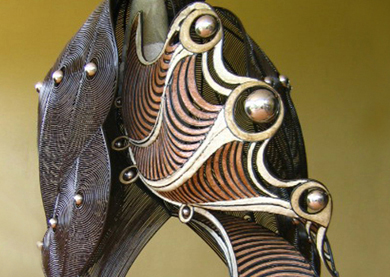
Thai art before the arrival of Buddhism
The Arrival of Buddhism in Southeast Asian Art
(1) Introduction
In the Chinese-speaking world Roman Catholic doctrine goes by the name of Tian-zhu Jiao (roughly, “the teachings of Heaven”), a term that is used for Catholicism more generally; Protestantism goes by the name of Ji-du Jiao (the teachings of Jesus). In my experience the average educated Chinese, if she has not been converted to Catholicism or Protestantism, has only the vaguest notion of what either faith entails. In this of course she is like the average Westerner in relation to Buddhism. One is likelier, however, to find among western scholars a detailed knowledge of Buddhist doctrine than among Chinese scholars a detailed knowledge of Christian doctrine. In lecturing on Southeast Asia and Western Europe at Beijing University, I offered a skeletal account of Buddhist doctrine and a summary of Christian doctrine.
Both are available in the text of “Analogies between Southeast Asia and Western Europe,” to be found with other talks under “Recent lectures”. Here I will not recapitulate my understanding, or ignorance, of Buddhist doctrine, a truly imposing subject at least as various and complex as Christian theology. Instead I begin by listing, for the convenience of interested readers, three of the three dozen books that I reviewed by email recently as I was preparing a lecture on Buddhism in Art with an emphasis upon religious expression in Thailand (its three parts: I The exotic element in popular Thai sculptures; II Books about Buddhist Art, and III Thai Buddhist Murals). The three books in question here, all very useful, have self-explanatory titles:
-
Basic Teachings of the Buddha: A New Translation and Compilation, with a Guide to Reading the Texts, by Glenn Wallis (New York: Random House, The Modern Library, 2007)
-
In the Buddha’s Words: An Anthology of Discourses from the Pali Canon, edited and introduced by Bikkhu Bodi with a forward by the Dalai Lama (Boston: Wisdom Publications, 2005)
-
Buddhist Dictionary: A Manual of Buddhist Terms and Doctrines, compiled by Ven. Nyantiloka and edited by Ven. Nyanaponika, fifth revised edition (Chiang Mai: Silkworm, 2004)
Since Buddhism varies from India to Sri Lanka, where its Theravada doctrines were codified and transmitted to Indonesia, Burma, Thailand, Laos and Cambodia, from India to Himalayan Asia, where its Mahayana and Vajrayana doctrines were codified and transmitted northward to China, Korea and Japan, then southward to Vietnam and elsewhere, it might also be useful for the general reader to consult a general introduction to Buddhism, such as Karen Armstrong provides in several books of hers.
Christian doctrine I elaborated in a dense paragraph in my Beijing lecture. Buddhist doctrine, though a summary of basic tenets may be helpful, is better studied in terms of local Buddhist cultures. One purpose of the present exercise is to demonstrate the variety of its doctrinal expression in the visual arts. Immediately, however, I must make a disclaimer: I am no expert in the Buddhist art of China, Korea or Japan, of Tibet or Nepal, nor even of Southeast Asia, but am merely a studious tourist.
As a novice, I would highly recommend to any other beginners:
-
Buddhist Art: An Illustrated Introduction, by Charles F. Chicarelli (Chiang Mai: Silkworm, 2004).
This little guide contains sections on “The Life and Teachings of Sakyamuni Buddha,” on Theravada, Mahayana, Vajrayana and Zen doctrine, plus 180 color plates in illustration of Buddhist art in India, China and Central Asia, Korea and Japan, Nepal and Tibet, Sri Lanka, Burma (Myanmar), Indonesia, Cambodia, Thailand and Vietnam.
Its two appendices, one on “Mudra, Asana and Banga Terminology” (with drawings in illustration of the eight principal mudras) and another on “The Five Transcendent Buddhas of the Mahayana and Vajrayana Faiths” are especially useful. It also includes a six-page glossary that identifies by language the most important terms, which should be memorized by the reader who wishes to proceed to the next stage of erudition. A “Map of Buddhist Sites in Asia” adorns its front and back endpapers.

(2) A Comparative Point or Two
Unlike Christianity, Buddhism is not only a religion and an ethics but also a psychology and a philosophy. Unlike Christian practice (except perhaps in its stricter meditative traditions), Buddhist practice is preeminently concerned with the achievement of quietude (though no Buddhist, I live alone, eat alone and sleep alone). Sometimes this achievement is referred to as “mindfulness.”
In Willis’ summary, Buddhism tells us that “being ardent, fully aware and mindful and having put down longing and discontentment toward the world, we should live observing the body in and as the body, live observing feelings in and as feelings, live observing mind in and as mind, and live observing mental qualities and phenomena in and as mental qualities and phenomena.”
This is hard to do within the social matrix, and so most Buddhist art represents not man in society but man as solitary. To the extent that we can all recognize quietude, the meaning of the meditative Buddha’s image is evident, as the suffering of Christ is evident in the image of his crucifixion. These single images, however, do not limit the meaning of Buddhism and Christianity.
Moreover, in architectural settings Buddhist art frequently represents the Buddha within the social matrix. Notable examples are the Jataka tales (547 stories regarding his previous incarnations) in the temples of Bagan (in Myanmar); the scenes of daily life depicted on the walls of the Bayon (in Cambodia); or similar scenes along the stages of ascent at Borobudur (in Indonesia).
Nonetheless, in all these cases the quotidian is accompanied by the hieratic, as in the magnificent standing figures of the Buddha in many of the Burmese temples; as in the extraordinary images of Jayavarman VII in the persona of the Bodhisattva at the Bayon*; as in the multiple Buddha images embedded within the myriad stupas on the various stages of the Borobudur monument.
A parallel is to be found in Roman Catholic art, where hieratic images of Christ crucified, or with his mother, Mary, or of Mary alone are supplemented with images of the stations of the cross (scenes representing Christ’s progress toward crucifixion) or other scenes from the New Testament or the recapitulation of crucial events and figures drawn from the Old Testament.

* The four heroic images of Jayavarman VII adorning sixteen prasats facing in the cardinal directions (there are 64 images altogether) may refer to (1) the four faces of Brahma, (2) the Lokeshvara Bodhisattva (3) the Buddaraja (the Buddha as King), (4) Jayavarman VII, king of the Khmers and thus an apotropaic figure (cp. Christ, the Church Militant), warding off enemies, as well as (5) Jayavarman as Buddhist devotee.
(3) The Pitakas
Though strictly speaking none of the Buddha’s historical words was recorded, his doctrines were transmitted by loyal disciples, who elaborated them as did Christ’s disciples, his and by later pious theologians. The texts, called sutras in Sanskrit, suttas in Pali (a language derived from Sanskrit for the express purpose of recording them) are referred to collectively as the pitakas (baskets) that contain the Buddhist canon. Of the various pitakas Willis offers an overview, which I condense as follows:
The Vinayapitaka contains rules and regulations governing monastic life.
The Suttapitaka contains the suttas, “the ocean of dhamma,” in five sections:
The Dighanikaya, a collection of long discourses;
The Majjhimanikaya, a collection of middle-length discourses
The Samyuttanika, a collection of “connected discourses” (the 2,889 suttas of this section,” says Willis, “are among the most thorough and penetrating of Buddhist literature. The insights revealed herein are central to the Buddha’s teachings on the nature of the person, the phenomenal world and the relationship between the two”
The Anguttaranikaya, a collection of numerical discourses (“the 2,308 suttas in this section,” says Willis, “are more or less summative. They thus appear to recapitulate points made in suttas through the Suttapitaka as a way to facilitate quick recall of the teachings”)
The Kuddhaka, a collection of small books. The best known of these are the Dhammapada (the great moral treatise, whose title means “the Way” (pada) “of the moral law” (dhamma, Pali for the Sanskrit dharma) and the Jatakas (stories largely ethical in their emphases, of the Buddha’s previous lives, widely illustrated in the Buddhist world), plus the Theragatha and the Therigatha (“poetic expressions of realization by early male and female followers of Buddhist teaching”)
-
The Abbidhammapitaka contains seven works that examine aspects of the sutta material in minute detail. Themes of the various texts, according to Willis, include enumeration of the elements (here also called dhamma, in the sense of principles) of existence, investigation of the unfolding of mental moments or factors, the nature of causation, along with a description of the various personality types.
(4) Buddhism arrives in Thailand
Note: In sections (4), (5), (6) and (7), which treat respectively the arrival of Buddhism in Thailand, Burma, Laos and Cambodia, I have recourse to the work of such unusually learned scholars as Betty Gosling, Donald M. Stadtner, Denise Heywood and Vittorio Roveda. Accordingly, my method will be to quote their texts, with slight modification for the sake of economy. All four have been published in beautiful editions by River Books of Bangkok, who, along with Silkwood Books of Chiang Mai, are the new pioneers of Southeast Asian cultural and religious studies in English.
Betty Gosling, who teaches at the University of Michigan and works at its Center for Southeast Asian Studies, helps us with what her first chapter calls “The Complexities of Thai Art,” which, as subsequent chapters explain, blends native Neolithic traditions with exotic traditions, varying the amalgam in “The Dvaravati Heartland,” “on the Peninsula” (where Indonesian Srivijaya makes its influence felt), “in the Khorat Plateau, the Central Plains and the Northern Highlands” (all served by Khmer models).
Her third chapter, on “The Introduction of Buddhist Art” into Thailand, helps us to understand a highly complicated historical process of transmission.
During the early centuries of the first millennium A.D. the variety of imported objects that had begun to arrive in the Lower Central Plains over the last centuries B.C. increased substantially. A third of the world away, the Roman Empire was seeking Asian silks and spices, and systematic long-distance trade routes were beginning to connect Europe, Persia, India and China. In order for the European, Indian and Chinese traders to reach their destination, they had to cross or circumnavigate the land that one day would become Thailand. [Here Gosling is drawing upon Kenneth R. Hall, Maritime Trade and State Development in Early Southeast Asia (Honolulu: University of Hawaii Press).]
The city of Chansen, she notes, was an important site for overland and maritime trade.
One unique object that arrived at Chansen was an ivory comb engraved with Buddhist symbols. The comb’s depictions of chakra (wheels), lotuses, conch shells, hamsa (geese), chattra (parasols) and purnaghata (auspicious, forever-blossoming pots of flowers) were all images that had begun to be incorporated into a complex Buddhist iconography formulated in India centuries earlier.
As we know from the study of the original traditions of non-figurative Buddhist art, such images were preferred to the human figure, which was all but totally excluded.
Gosling too is very helpful in our understanding of the emergence of anthropo- morphic representations in the Buddhist art of India. Such figurative art first
appeared in north India in the first century A.D., derived from diverse artistic sources. The earliest images were in the style of earlier yaksha figures made in the Mathura region, but the most influential sculptural tradition derived not from local prototypes but from western sources. In the fourth century B.C., after Alexander’s invasion of 327, a region of modern Pakistan and Afghanistan had come under the influence of Greek culture. This juncture of caravan routes that connected the Roman Empire and Asia (and by the first century A.D. became a major trading center) was receiving a few Roman works of art. Images of the Buddha, called “Gandharan” after a major polity in the region, began to be created. Their appearance was, not surprisingly, more European than Indian.
“Stylistically,” says Gosling, “Gandharan images of the Buddha
were so Roman-like in their appearance that they are sometimes considered a provincial form of Roman art. If the style was western, however, the images were essentially Indian, for their significance was expressed by iconographic features devised in India and denoted specifics of the Buddhist doctrine that owed nothing to foreign prototypes. Various body positions (asana) and hand positions (mudra) were used to designate different events in the Buddha’s life. While many images were standing, more often they were seated with legs crossed in the traditional meditation pose of the Indian yogi . . . The dhyana, or meditating mudra, in which the hands, palms facing upwards, rested on the lap, represented the Buddha’s meditation beneath the bodhi tree. The abhaya mudra, with raised palm facing outward, the bestowing of blessings.
And so on. Gosling goes on to elaborate upon the development of the various sects in India and their doctrinal influence on the development of an artistic iconography. Finally she turns to “The Believers in the Doctrines of the Elders,” that is, in the Theravada sect, as it came to be known, and its dissemination from the Indian port of Amaravati to “destinations as far away as China. “Amaravati” she observes, “lay directly west across the Bay of Bengal from Thailand’s Three Pagodas Pass.”
A case can be made, she concludes, “that it was South Indian missionaries who arrived in the Central Plains and perhaps brought the Buddhist comb to Chansen.” The evidence for this date and method of transmission, she admits, is sketchy and her thesis hypothetical. Whether the Pali texts that appeared in Thailand were transmitted orally or in writing is also uncertain. Nonetheless Buddhism clearly was “becoming established in the Central Plains,” where it would play a role for centuries to come.
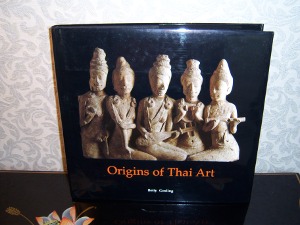
(5) Buddhism arrives in Burma
“The Buddha’s teachings and even the story of his life, “says Donald M. Stadtner
in his splendid Ancient Pagan: Buddhist Plain of Merit (2005), “[unlike those of Christ] were not put into writing until centuries later, encouraging accretions that further distorted the facts of the Buddha’s life. Disparate traditions coalesced into what we call now the Pali canon, or the Tipitaka, literally the ‘Three Baskets.’
“It is divided into the Vinaya (everyday rules for monks), the Sutta, sayings of the Buddha, and Abhidamma (philosophy). Other texts were known to the early Burmese Buddhists, where monks understood some Sanskrit as well as the Pali into which the canon had been translated and spoke Old Burmese. “The Mon at Pagan,” says Stadtner, “spoke what we call Old Mon, and numerous inscriptions are in this language.”
Bagan, in the modern spelling that more accurately reflects its pronunciation, is of course the magnificent plain on the Irrawaddy adorned by a thousand temples. I visited a dozen of these and described them in Myanmar 2004. In addition to the illustration of the Jatakas and other common Buddhist programs, they include some other themes that the reader may find of interest. One is “The Seven Weeks at Bodh Gaya”:
“In the earliest literature four weeks that the Buddha spent there are known,” says Stadtner, “but they were expanded in the Nidanakatha to seven. Many incidents occur during these forty-nine days, but he lists the eight most popular. An early painted example appears inside the Pahto-thamya, an 18th century series in the Sulamani:
Obtains Enlightenment beneath the Bohdhi tree and defeats Mara
Stands gazing at the Bodhi tree for a week without blinking
Walks to and fro on a jeweled walkway gifted by the gods
Formulates philosophical conceptions in a jeweled house
Is tempted by Mara’s three beautiful daughters under a banyan tree
Is shielded from a storm by the hood of the snake-king Muchalinda
Receives food offerings from two traveling merchants
“Another theme of wide currency at Bagan,” says Stadtner, “is the eight events
in the Buddha’s life. Each is associated with important pilgrimage locations in India:
Nativity. Queen Maya grasps a flowering shala tree and the Buddha emerges from her side
Enlightenment. The Buddha sits beneath the Bodhi tree, his right hand touching the earth
First Sermon. The Buddha’s hands touch together at chest level as two deer and a discus symbolize his teachings
Twin miracles. The Buddha replicates himself to defeat heretics by performing a miracle
Descent from the Heaven of the 33 gods. Descending on steps, the Buddha is accompanied by Sakka and Brahma
Parileyyaka Retreat. A monkey presents honey to the Buddha, who is seated with a bowl in his lap
Nalagiri Elephant. Devadatta, the Buddha’s cousin, who had sent an elephant to attack him, kneels in defeat at the Buddha’s feet
Parinirvana. The Buddha is shown at Kushinagara, where in death he lies on his right side between two shala trees
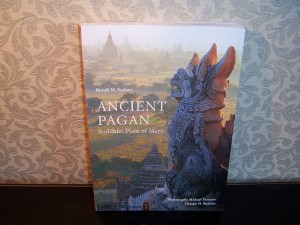
(6) Buddhism arrives in Laos
Laos is a little off the map of the major centers of Southeast Asian culture, and Buddhism was late in arriving there. Elegant Luang Prabang, bejeweled with delicate, exotic wats (Buddhist temples and their compounds), is a sleepy town of 200,000 people. The present-day capital of Vientiane is not much larger. There is no Rangoon or Mandalay, no Saigon or Hanoi and certainly no metropolis the size of Bangkok.
The Laos, who speak Lao, a dialect of Thai, as do the people of Thailand’s large agricultural Northeast, the Isaan, have always been under the domination of one or another neighbor. It was by way of the Khmer empire, converted to Mahayana doctrine under Jayavarman VII and latterly to Theravada by way of Thailand, that Laos received Buddhism. This took place as recently as the 13th and early 14th centuries.
When Hinduism and Buddhism originally came to Southeast Asia, in the 3rd and 4th centuries A.D., it was absorbed by cultures largely animistic in their native beliefs. Such was the case in Laos. Denise Heywood, in her brilliantly illustrated, gorgeously produced Ancient Luang Prabang, sketches the background of Lao myth:
In Lao mythology the earth was covered with primeval forests and phi, the spirits or soul of the mountains, rivers, trees and streams. Rice has many spirits, not only in the grains but in the whole plant and thereby in the entire rice field. Various prayers and festivals, still performed today, protect the phi of the rice and ensure abundant crops and good harvests. Other phi, both benevolent and malevolent, were placated by special ceremonies throughout the year. Myths, especially cosmogonic ones (those describing the creation of the universe), were of primary importance for they related directly with people’s very existence. They told how the king of the heavenly gods, Khun Borom, descended to earth to become the monarch, so henceforth kings were considered holy as well. Thus “myth and history blended and fused,” says Betty Gosling in her study of Old Luang Prabang, “and the surrounding ceremonies and rites perpetuated Luang Prabang as a royal city.”
Buddhism spread slowly in such an environment and only gradually did Buddhist kings convert the country to the faith:
It was first declared a state religion in the 14th century by King Fa Ngum, which he did by accepting from his Khmer father-in-law the golden Pra Bang Buddha, the palladium of the Kingdom of Lane Xang. In 1356 he built a wat in Muang Swa (the early name of Luang Prabang) to house this revered image. During King Sulinya Vongsa’s reign in the mid 17th century Buddhism was taught in schools. It adopted some forms of phi worship, whereby sacred images of Buddhism were surrounded by ritual offerings of food, fruits, incense and candles, in the animistic tradition, as they still are today. Such offerings and rites were also accorded to the dead so that their souls or ghosts would not remain near the living.
Heywood goes on to discuss Theravada’a historical emphasis upon “three principal aspects of existence: (1) suffering; (2) impermanence and transience; and (3) the non-essentiality of reality,” a doctrine still alive today.
It teaches that the path to enlightenment is achieved by individual effort and is most accessible by joining the monkshood. The other form of Buddhism, Mahayana, the “greater vehicle,” adhered to in East Asia, is less rigorous. Mahayana Buddhists believe in bodhisattvas, enlightened beings of compassion who, in order to assist man, delay entry into nirvana, literally the absence of all that is, the transcendence of the delusory world and freedom from the process of birth, disease, old age and death. In contrast, Theravada Buddhists recognize only the Buddha as a bodhisattva.
The Jataka tales, which decorate many temples in Myanmar and Thailand, are also prominent in Lao iconography, “where these bodhisattvas represent the previous incarnations of the historical Buddha and relate his 547 lives before his rebirth as Siddhartha Guatama, during which he achieved enlightenment. (These tales constitute but one of many programs of Buddhist iconography seen throughout Asia.)
The final ten jataka tales, especially the last one, the Vessantara Jataka, the Great Birth Tale, in which the Buddha was born as Prince Vessantara, are the most important and feature in much Lao art and literature. The jataka tales focus on the Buddha’s moral evolution, his pursuit of virtues, the paramitas, and his inner strength. They illuminate the most essential virtue in Buddhism, the act of giving, dana in Pali. Thus the practice of painting and sculpture accompanied beliefs from India across Asia, reinforcing the fundamental tenants of Buddhism.
In her introduction, “Art and Religion,” Denise Heywood casually refers to several other features of Buddhist iconography, native to Laos but often more widespread. Her lively inflections and local contexts make of her discussions a list more memorable, I think, than the customary glossaries and dry introductions to Buddhist symbolism, and so I here continue to quote passages from a number of her paragraphs:
Stylistically, images of the Buddha in Lao art evolved through several stages. At first the artists, who were always anonymous, copied past Khmer and Lan Na (northern Thai) styles. Madeleine Giteau, in her book The Art of Laos, reinforces the point that artists did not create naturalistic representations of the Buddha but modeled a stylized image inspired by sacred texts.
Other sacred imagery in Lao art includes the traiphum, the three worlds of Buddhist cosmology, heaven, hell and earth. There are three basic perceptions of the world, samsara, the continuous series of cycles of existence, tradhutaka, the threefold world, and chakravala, the configuration of the world with Mount Meru at its center. The colossal Mount Meru, center of the universe, surrounded by seven concentric chains of mountains is the abode of the celestial Buddha.
The lotus is a recurring image. Its origins are in Hindu mythology, which holds the lotus as sacred, symbolizing the yoni, the female generative organ, and thus the origin of life. The spirit of the Supreme Being was personified by a golden lotus on a vast sea. Brahma, God of Creation, representative of the Universe, was born from a golden lotus. Sculptures of Vishnu, the Preserver, often show him in a cosmic sleep on the mythical serpent Ananta, dreaming in new worlds.
From his navel issues the golden lotus on a long stalk from which Brahma was born. Its petals expand into the universe and from them arise hills, mountains and valleys. The lotus appears as a pedestal or throne to support many images both in Hinduism and Buddhism. The Buddha was associated with the lotus at his birth and is often depicted as standing on one. That its roots are in water and its petals above are symbolic of the states of wisdom and knowledge.
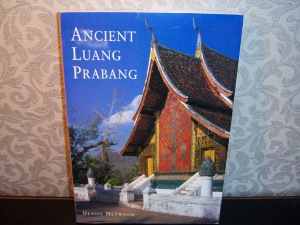
(7) Buddhism arrives in Cambodia
Early Chinese reports of Funanese images with many arms suggest that perhaps Brahmanism arrived earlier than Buddhism, but the evidence is flimsy and the likelihood of their simultaneous arrival is equally possible. Certainly the earliest Khmer sculpture offers both Buddhist and Brahmanic examples and furthermore reveals that Buddhism came not as a single school of thought but in both Thervada and Mahayana forms.
The imperial city’s best-known monument, the world-famous Angkor Wat temple complex, has been continuously occupied by an active community of monks ever since the introduction to Angkor of Theravada Buddhism as a state religion at the beginning of the fourteenth century . . . The monks had kept it clear of the jungle and in a state of fair to good repair until the arrival of the French authorities and beyond, for that matter.
The question of the date at which Buddhism arrived in Cambodia is of somewhat greater importance than the question of the date at which it arrived in Thailand, Myanmar, Laos or elsewhere in Southeast Asia, for nothing less than the integrity of the native, Hindu-influenced Khmer civilization is at issue. We surmise that Jayavarman VII is representing himself as the Bodhisattva in the towers of the Bayon and accordingly that he was a Mahayanist, but where did his inspiration come from?
Though a scholarly treatment of this subject of the importation of Buddhism into Cambodia would require the collation of many sources and studies, I will here limit myself to quotations from the account of Michael D. Coe, a seasoned professor of anthropology at Yale, who has also written several books on the Maya civilization, for the answers to many questions regarding Cambodian Buddhism require good judgment in the assessment of evidence to discern the truth of the matter.
I will allow the sequence of Coe’s comments on Khmer and later Cambodian Buddhism to control my own presentation; once again I rely heavily upon quotation, partly as a way of recommending to the general reader this summative study of Angkor (which is not to say that it replaces the earlier, more scholarly works of Vittorio Roveda, Khmer Mythology and Sacred Angkor: The Carved Reliefs of Angkor Wat, or those of other scholars). I cite professor Coe for the broad range of his concerns.
According to the Indian historian Himanchu Prabha Ray, Buddhism was the potent moving factor in the expansion of maritime trading networks from India to Sri Lanka, and then to the eastern lands. Unlike Vedic Brahmanism, Buddhism was quite open to trade and to usury – that is, to money-lending and banking; Brahmanic Hinduism had evolved in an agrarian environment, whereas Buddhism had taken root in a milieu of urbanism and growing trade networks.
It was and is a congregational religion, and the proselytizing bikkhus or monks who accompanied the traders on their expeditions were able to provide identity and cohesiveness to these peripatetic merchants. But, paradoxically, Buddhism and Hinduism arrived together in mainland Southeast Asia and Indonesia, and one reason why they did so is probably, as Professor Ray has said, that while the lay community follow the Singhalese ritual, daily life is governed by the Hindu.
Some physical evidence for the simultaneous transmission of Mahayana and Theravada traditions from India to Cambodia lies at Angkor Borei, the center of the Oc Eco enclave or civilization, in particular a body of very early sculpture that has been ascribed by art historian Nancy Dowling to this period. It includes twelve images of the Buddha that reflect (1) a school that used Sanskrit for its canonical language and (2) a school associated with Amaravati and with Sri Lanka, whence came Theravada.
Further evidence for the presence of the Mahayana faith within the Khmer domain comes from inside the borders of modern Thailand, at Prakhon Chai, about midway between the Angkorian site of Phnom Rung and the town of Surin, in southern Khorat. Many standing and seated Buddhas were discovered here, according to professor Coe under mysterious circumstances. The majority bear Mahayana characteristics, such as those depicting the four-armed Bodhisattvas Avalokiteshvara and Maitreya.
“Art historians,” says Coe, “place the entire Prakhon Chai group in the seventh to ninth century of the Early Kingdom and relate it to the stone sculptures of Angkor Borei and Phnom Da. In lieu of real contexts [the whole lot of sculptures was spirited away undocumented and sold into the art market], all one can say is that these bronzes must have resulted from the patronage and endowment of a powerful Khmer ruler with strong ties to Mahayana at a time when Buddhism was on the wane.”
“With the mighty Jayavarman gone,” writes Coe, “a vast reaction against Buddhism and the Sangha took place at Angkor in the thirteenth century:
Some scholars have thought the this might have been triggered by dissatisfaction with the long Mahayanist rule of Jayavarman VII, yet that monarch was not only tolerant toward Hinduism but also had installed shrines to the Hindu gods within the Bayon. Whoever was responsible for the iconoclasm, it must have been a king, for the extent of the vandalism staggers the imagination: every single Buddha image in Angkor was systematically broken up or defaced, including the great seated Buddha in the Bayon’s central shrine. This meant, for example, the chipping out of an estimated 45,000 images along the crests of 8.5 kilometers of walls surrounding the monastic complexes of Preah Khan, To Prohm and Bantey Kdei; the conversion of Buddhas into rishis or even lingas; and the erasure of stela texts.
After Angkor was re-Hinduized, it began to decline. By 1296, when Zhou Daguan visited Angkor and chronicled its political and social institutions, Buddhist monks again thronged the Vishnuite terraces and courtyards of Angkor Wat, and halls had been built of wood for communal Theravada worship. Angkor was to remain Buddhist till the present day. Some of Zhou Daguan’s information, Coe opines, suggests practices consistent with Tantric rather than Mahayana or Theravada custom.
According to him the dead was simply laid out on straw matting and covered with cloth. Then the corpse was borne in a procession accompanied by music, the mourners scattering fried rice along the way until they arrived at “some lonely place” outside the city. There they abandoned the cadaver and went home, after seeing that the vultures, dogs and other beasts were coming to devour it. If the corpse was not eaten, they ascribed the fact to some misdeed committed by the departed one.
By and large, however, what Zhou reports of ritual practice remained comfortably within Mahayana and Theravada traditions. In Coe’s paraphrase:
On entering a temple, Buddhists, be they Mahayanist or Theravada (as many were by the end of the thirteenth century), paid devotion to the “Three Jewels” or “Three Refuges”: (1) the Buddha, represented by an image, a stupa (burial monument) or a bodhi tree, under which the Founder reached Enlightenment; (2) the Dhamma, Buddha’s teaching, represented by a sermon or informal teaching; and (3) the Sangha, the community of monks. The devotee showed reverence before the sacred objects by bowing three times while standing or kneeling with the palms joined. As with Hindu devotion, Buddhist offerings, accompanied by chanted verses, were made to the images and usually consisted of flowers, incense and often a ritual scarf.
The sudden collapse of the classic Khmer civilization at Angkor, traditionally dated to 1431, has been a mystery. Did Jayavarman VII overextend himself with his massive building programs? Or was it invasion by Siamese armies that brought about the collapse? Coe cites another possibility, the “religious hypothesis” of Lawrence P. Briggs, who was convinced that the adoption of Singhalese (i.e., Theravada) Buddhism sapped the aggressive strength of the empire by introducing a pacifistic philosophy:
The change of religion [in Coe’s summary] had more to do with the end of the great period of architecture and art than the ravages of the Siamese and their sack of the capital. The transformation was internal. The soldiers of Ayutthaya not so much conquered them with warlike blows as seduced them with the hope of a milder religion. No amount of blows from without could account for the unfinished condition of temples and sculptures begun decades and even centuries before the fall of Angkor.
Coe counters by citing others who have pointed out “that the same supposedly ‘milder’ version of Buddhism did not stop the rapidly expanding Thai in their military aggressions against Cambodia, which continued until the mid 19th century, nor did it stop the latter from making vigorous counterattacks, nor did it deter the Burmese from invading Siam and sacking Ayutthaya in 1569. What it did do was to make monumental stone temples irrelevant to royalty and to the Khmer people.”
The exact means by which Theravada doctrine was introduced into the Khmer Empire are unknown. “Art historian Madeleine Giteau,” says Coe, “believes that the Thai kingdom and the Burmese court played a part. By the beginning of the 14th century, at any rate, the Thai of the Sukkothaya kingdom had adopted Sinhalese Buddhism; and a Burmese text says that the son of a Cambodian king (perhaps Jayavarman VII) went to Sri Lanka to be ordained, thence returning to Southeast Asia in 1190.”
At any rate, there has never been a reversion to either Mahayana or Hindu practice, whether during the Khmer period or modern times. “Massive post-classic alterations were instead carried out to Angkor’s most famous monuments, thereby converting them to Theravada purposes. A Shivaite shrine was engulfed by a gigantic statue of the Buddha seated on a lotus; the west side of the Baphuon was ‘re-managed’ in the 15th century into a colossal relief of the reclining Buddha”; etc., etc.
Angkor Wat continued as a center of Buddhist culture and ritual. “The Buddhist Sangha was very large; the king was considered the natural protector of Buddhism; although they played no real role in the administration of the country, the Buddhist clergy entered into the lives of every Khmer.” Artistic expression became exclusively Buddhist. In the whole Cambodian record there is no example of secular sculpture.
“The greatest single work of post-classic literature,” Coe notes, “is the Khmer version of the Ramayana known to the people of Cambodia as the Reamker, ‘The Glory of Ram,’ composed in Middle Khmer between the 15th and the 17th centuries. As Madame Saveros Pou has stressed, the Reamker is not just an echo of the Indian epic but a total reworking of it so as to express a fervently Theravada Buddhist content.
“Ram is not only an avatar of Vishnu but also a Bodhisattva and a Buddha, an upholder of the Dharma. In the story of Sita’s abduction by Rab (Ravana) and ultimate rescue by Ram and the monkey army, Ram intends to conduct his beloved wife to the Supreme Nirvana. Brahma and Indra play subordinate roles, the latter god acting as the Buddha’s faithful servant. The original epic has become thoroughly Buddhist.”

(8) Buddhism arrives in Vietnam
Unlike landlocked Laos, where Buddhism of necessity came from neighbors, unlike Thailand and Cambodia (and even China), whose western borders were often crossed by missionaries bearing Buddhist doctrine, Vietnam customarily received its doctrines by way of seafarers, though Tantric influence probably arrived overland. The country’s long coast line historically has been a factor in both its openness to foreign influence, especially from India and China, and in its vulnerability to invasion.
It was by this means that Theravada doctrine arrived from India and Confucian doctrine, from China. Early on, Cham art was far more heavily influenced by India (though traces of Chinese, and even Indonesian, art are present); later on, especially during its thousand-year domination, China prevailed. Vietnam’s later, Mahayanist, cast is owing to the arrival of Buddhism from China, whose influence also accounts for a culture more intellectual and literate than those of its Southeast Asian neighbors.
The arrival of Buddhism in Vietnam is chronicled by Ha Van Tan, Nguyen Van Ku and Pham Ngoc Long in Buddhist Temples in Vietnam.
Buddhism was introduced into Vietnam around the beginning of the Common Era. At that time Vietnam was called Giao Chau (Jiaozhou in Chinese) and was dominated by the Han Empire. Indian monks had come here, following trade routes, both by land and by sea. . . .
The authors of this study, first published in 1992 and reissued in 2008, recount a legend from the area known as Dau:
Among the Indian monks coming to Vietnam, one called Ksudra, Kalacharya, meaning “the Black Master,” stayed at Luy Lau [the earliest Buddhist center in Giao Chau]. The legends say that a girl named Man Nuong became pregnant after being intentionally stepped over by Ksudra.
The outcome of the incident may be seen as evidence of the syncretism of the new doctrine and earlier, animistic beliefs:
The newborn girl was put into the trunk of a banyan tree by Ksudra. Later on the tree fell down and slipped into the river. People of the village took its wood to carve statues of the Dharma Goddesss of Cloud, Rain, Thunder and Lightning for the four Dharma Temples in Dau.
Even more exotic elements were introduced, according to our Vietnamese chroniclers. “From the Common Era to the 4th or 5th century,
though Buddhism in Vietnam was mainly under Indian influence, Central Asian monks also arrived in Giao Chiao, such as Khung Tang Hoi, the son of Sogdian parents. He became versed in Chinese and Sanskrit. In 247 C.E. he traveled to Jan Ye (Nanjing) and returned bearing Buddhist classics.
*
Another of my sources concerning the advent of Buddhism is Viet Nam: A Long History by Nguyen Khac Vien, recently acquired in Saigon:
Hinduism was at its peak during the Ly dynasty, whose accession to the throne had been favored by the Buddhist clergy. In return the latter received the highest privileges. Kings themselves were interested in the study of doctrine and often took bonzes as advisors.
This official Communist history, first published in 1987 and now in its sixth (“revised”) edition, presents a Marxist view:
The pagodas [i.e., the Buddhist monasteries] owned large domains worked by serfs. Bonzes were exempt from taxes and military service. Kings and princes had large numbers of pagodas built and bells cast, and they promoted the dissemination of sacred books.
As Nuyen Khac Vien makes clear, there were multiple arrivals of Buddhism in Vietnam, for example:
In 1080 King Thac To sent a mission to China to gather texts of the Tam Tang; in 1068 King Thanh Tong oversaw the creation of the Thao Duong sect, and several kings became patriarchs of Buddhist sects. Princes and nobles followed their example.
*
Vietnam’s early development is in many ways similar to that of Cambodia’s, where the great Indianized local culture of the Khmers was imbued with a strong Mahayana tincture (as recounted in the previous section). In his introduction to the Champa civilization, Cham Art: Treasures from the Da Nang Museum, Vietnam, Emmanuel Guillon recounts the periods of its historical culture, dated to 877 A.D., as it progressed through a complex series of phases not yet fully understood
During the early Champa Empire the temple of Dong Duong was dedicated to Lakshmindra Lokeshvara, thereby associating the Avalokiteshvara Bodhisattva with the persona of the sovereign, as Jayavarman VII had done at Angkor. Chinese in plan, ultimately Indic in iconography, many of its decorative motifs, according to Guillon, are nonetheless “clearly of Indonesian inspiration,” though “there is a big gap between their interpretation in Champa,” he says, “and the excellence of the originals.’
The Cham was doubtless a major civilization, or at least a major branch of the Indianized early Southeast Asian culture, but its aesthetic (and I have been fortunate enough to inspect remains in situ) leaves me a little cold. Here I may be unfavorably, and unfairly, comparing the Champa remains with the Angkorian; the latter, much better preserved, after all constitute the nachlass of one of the world’s very greatest cultures and civilizations. A more detailed study of the Cham by all is doubtless called for.
*
In contemporary Vietnam, where many regard themselves as Buddhist in religion (if they are more Confucian in social practice), Chinese Mahayana belief mingles with the practice of Zen (Skt. Dhyana; Vietnamese Thien), whose doctrines arrived from China and Japan. Dao Trang, the Pure Land School, is found mainly in the South. All these Buddhist schools have co-existed for centuries, in opposition to, or more often in syncretism with, Confucianism, Taoism and, latterly, Roman Catholicism.
The presence and practice of Zen in Vietnam is perhaps best illuminated not by recapitulation of its doctrines but by a more casual cultural survey. One of the best such exercises is Huu Nogoc’s À la découverte de la culture vietnamienne. In a Hanoi book store, during my 2005 trip to Vietnam, I found an English translation, passages from which I interwove into the expanded version of A Visit to Vietnam. I donated the English translation to students in Saigon, where recently I found the original.
As a Vietnamese Huu Nogoc is of course better qualified to speak of Vietnamese cultural traditions than is a westerner. I will limit myself here to a series of quotations that surround and bear upon the question of Thien and its position in Vietnamese culture. In the first, drawn from a short travel account titled “Au berceau du Zen vietnamien,” he recalls his 2002 visit to an ashram in Lan, where the Zen sect arose but existed among other forms of Buddhist tradition. I now quote various passages from Huu’s text:
Le plus important apport spiritual indien, le bouddhisme, vient moins des missionnaires indiens que des mahayanistes chinois. Pourtant, dès 580, la première secte Thien (Zen) vietnamienne, a été fondée par le bonze indien Vinitaruci. Les pagodas vietnamiennes rendent en general un culte secondaire à une statue d’Indien barbu représentant Bodhidharma, créateur en Chine de la secte Thien (À la découverte de la culture vietnamiennine, 418).
La pagoda Lan tire son nom de la colline sur laquelle elle est bâtie, colline évocant une licorne (Lan). Elle est un maillon important de la chaîne des temples bouddhiques de la Cordière du Yen Tu au nord-est de la province maritime frontalière de Quang Ninh (plus de 100 km au sud-est de Hanoi). . . . Le pèlerin arrive à la pagoda dont nos avons parlé. Le Ruisseau de l’Absoluton (Suoi Giai Oan) l’attend avec son anecdote:
Lorsque le Roi s’enfonçait dans le Yen Tu, le prince héritier y envoya des femmes du harem pour prier son père de rentrer. Comme le souverain ne revint pas sur sa décision, les femmes se sont donné la mort. Une pagoda fut érigée en leur honneur. La piste grimpe à travers une magnifique forêt de pins séculaires pour déboucher sur une plate-forme surmontée d’une élévation. Ici sont regroupés 97 stupas et tombeaux autour de la Tour du Patriarche (108).
*
Un autre titre de gloire de Kinh Bac, c’est d’être le foyer d’une acculturation Viêt-Chine-Inde, d’une fusion de nos croyances autocthones, avec les religions importé (bouddhisme, confucianisme, taoïsme). C’est au IIe siècle, sous l’administration chinoise du proconsul Si Nhiep (Shi Hsieh) que les idéogrammes chinois et la culture classique han son introduits à Luy Lau, en même temps que le taoïsme et surtout le bouddhisme (112). Les touristes qui admirent à Ho Chi Minh-ville la pagoda Vinh Nghiem, joyau architectural, ne savant pas qu’elle n’est que la cadette et une réminiscence de la Vinh Nghiem de Bac Giang dont la première construction remonte au XIIIe siècle. Cette dernière était un des premier foyers du bouddhisme vietnamien, en particular de la secte Thien (Zen) créée par trois patriarches: le rois Tran Nhan Tong et les bonzes supérieurs Phap Loa et Huyen Quang (119-120).
Dans le village, à la rigueur de la norme confucéenne rationnelle, le boudhisme apporte le baume adoucissant du cœur, du sentiment. La pagoda est un havre de paix qui calme la douleur. Mais les concepts philosophiques de dharma, d’être et de non-être . . . restent l’apanage de l’élite lettrées. Pour le commun du people, les notions de karma, de métempsycose se réduisent à des croyances très simples: il faut faire le bien pour renaître sous forme humaine dans sa vie ultérieure, et parvenir au nirvana conçu comme un paradis doté de plaisirs terrestres; les méchants son emmenés à l’enfer par des diables qui les soummettent à des tortures affresuses. On évoque de preference le bouddha Amitabha (A-di-da) prêt à secourir tous les êtres souffrants et la bodhisattva Avalokitesvara (Quan Am), auxiliare du premier, qui peut exaucer les vœux les plus terrestres des personnes les plus déhéritées (374).
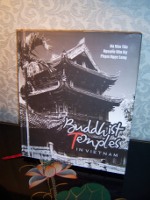
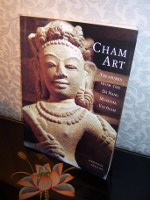
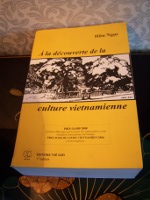
(9) Other sites, other countries, other traditions
Not too far from Jakarta lies Borobudur, one of the greatest Buddhist sites. I have not (yet) visited this site of worship, though I have devoted some study to its vast and vastly attractive temple-monument, described as a “walk-through mandala” in the Vajrayana tradition of so-called “Tantric” practice. I have not (yet) visited Tibet or Nepal, where the third tradition flourishes, though the Tibetan exegete Tson Kha pa “considers there to be only two major forms, Hinayana and Mahayana.”
The second he divides into the Perfection Vehicle (paramitayana) and the Secret Mantra Vehicle (guhyamantrayana), the latter including the Kalacakra, which, though it originated in South India, was transmitted first to Bengal, Bihar, Kashmir and then on to Nepal and Tibet. I have been to Bengal and Bihar (see Happening) but long after their Buddhist days. I have visited China (see Excelling and MM’s China) but not its northern Buddhist sites. Nor do I find Chinese Buddhist art charming.
I am somewhat more familiar with Korean Buddhist art, at least with the Silla sites in and surrounding Gyeongju, which I have visited half a dozen times and written about in my little pamphlet, Korea. Much earlier, in 1984, I had visited the temples of Kyoto and Nara. I have spent only a little time looking into Japanese philosophy, notably into the schools of thought inspired by Zen. In other words, I am abjectly ignorant about Buddhism but knowledgeable enough to recognize where to stop.